Kolak Pisang: A Favorite Ramadan Dessert To Break The Fast Posted by asimonoff on Jun 16, 2016 in Uncategorized
Breaking the fasting with sweet, delicious desserts has been considered as part of reviving the Ramadan tradition. Therefore, food plays a significant role in celebrating Ramadan and in ensuring the body withstands the 12 to 16 hours every day for 30 days without food and drinks.
Image credit to Kolak Pisang at Facebook.com
Hence, to ease the digestive process, the custom is to break the fast with a glass of hot, sweet tea, followed by warm and light foods, before having the main course usually taken after the Maghrib prayer, or Maghrib and Tarawih prayers.
Ramadan foods and drinks have become treasures to Indonesian culinary tradition due to their richness in peculiarity and diversity of local cultures. However, most desserts share a similarity in essential ingredients: coconut milk, and coconut sugar or palm sugar.
Image by Robin Kok/Flickr/all creative commons
Image by Salib Kayu/Flickr/all creative commons
One the favorite desserts to break the fast during Ramadan is Kolak Pisang. It can be served warm, or ice cubes can be added to serve it cold. The colorful ingredients, banana, cassava, jackfruit, as well as its flavorful taste and the distinctive aroma of Pandan leaves, coconut brown sugar, and coconut milk, make Kolak Pisang very appetizing.
Images taken from flickr/all creative commons (clockwise) by 1) BKP Provinsi Banten, 2) Petani Indonesia, 3) Gotri2000, 4) Olce, and 5) Maz Ngibad.
Here is a Kolak Pisang recipe with more ingredients added to it, which is called Kolak Pisang Lengkap, or a Complete Kolak Pisang in Bahasa Indonesia and English.
BAHASA INDONESIA
Bahan-bahan
- 4 buah pisang tanduk matang ukuran sedang, potong serong.
- 2 buah ubi merah ukuran sedang dipotong dadu.
- 150 gram singkong dipotong empat.
- 150 gram labu kuning, dipotong dadu
- 150 gram nangka matang dipotong tiga.
- 50 gram kolang kaling dipotong tiga.
- 3 lembar daun pandan, disimpul.
- ½ sdt vanili
- ½ sdt garam
- 500 gram gula merah, disisir halus
- 2 sdm gula pasir
- 1200 ml air
- 500 ml santan kelapa
Cara membuat
- Didihkan air, masukkan gula merah, garam, gula pasir dan daun pandan. Aduk sampai gula merah mencair lalu saring.
- Tambahkan santan, aduk terus secara perlahan dengan api kecil sampai mendidih dan santan tidak pecah.
- Masukkan kolang kaling, pisang tanduk, ubi, labu, singkong dan nangka.
- Masak sampai matang, cicipi rasanya
- Sajikan baik panas atau dingin dengan menambahkan es.
ENGLISH
Ingredients
- 4 ripe plantains (bananas), medium size, cut askew
- 2 pieces of medium-sized red potatoes cut into cubes
- 150 grams of cassava, cut into quarters
- 150 grams of pumpkin, cut into cubes
- 150 grams ripe jackfruit, cut into thirds
- 50 grams palm fruit, cut into thirds
- 3 pieces of Pandan leaves, knotted
- ½ tsp vanilla
- ½ tsp salt
- 500 grams of brown sugar, finely shredded
- 2 tbs cane sugar
- 1200 ml of water
- 500 ml coconut milk
Cooking Directions
- Bring the water to a boil, add palm sugar or coconut sugar, salt, cane sugar, and the Pandan leaves. Stir until the sugar melts and then strain before adding the coconut milk.
- Add the coconut milk, stirring constantly and slowly over low heat until boiling and coconut milk is not separating.
- Add palm fruits, plantains or bananas, sweet potatoes, pumpkins, cassavas, and jackfruits.
- Cook until all ingredients are soft, taste to ensure quality.
- Serve either hot or cold by adding ice cubes.
Sometimes, there are non-sweet desserts served with it, such as fried stuffed tofu (tahu isi), fried bananas (pisang goreng), fried tempeh (goreng tempe), or friend cassavas (singkong goreng) to temporary hold someone from hunger due to attending a long prayer at the mosque (Sembahyang Magrib and Sembahyang Tarawih).
However, sometimes, some people prefer to buy Ramadan desserts from food vendors who offer a variety of desserts from different parts of Indonesia and which are only sold during the month of fasting. This is also an opportunity to taste and experience the richness of Indonesian traditional cuisines, enjoying Ramadan cuisines as to reward themselves after being able to complete a day’s fasting.
Useful Indonesian words and expressions related to Ramadan
| Bahasa Indonesia | English |
| -Sahur | -Having meal at dawn to start the fasting |
| -Selamat berpuasa/Selamat menjalankan ibadah puasa | -Happy Fasting |
| -Selamat Berbuka Puasa | -Happy Fast Breaking |
| -Berbuka puasa | -Break the fast |
| -Takjil (Arabic word-origin) | -Ramadan dessert to break the fast |
| -Berbuka/Buka puasa bersama | -Break the fast together |
| -Bulan Suci Ramadhan | -The Holly Month of Ramadan |
| -Ramadhan Karim- | -A generous Ramadan |
| -Imsak | -The time in the morning, just before sunrise when the fasting begins |
| -Sembahyang/Shalat | -Prayer |
| –Ngabuburit | -A tradition to seek amusement and distractions from hunger while waiting for the day’s fast to end at dusk. |
| –Mudik | -Also known as Pulang Kampung is an Indonesian term for the activity where migrants or migrant workers return to their hometown or village during major holidays. Mudik is identical to the annual homecoming tradition that occurs ahead of major religious holidays, especially Lebaran (Eid al-Fitr). |
| -Lebaran/Hari Raya Idul Fitri | -Eid al- Fitr |

Build vocabulary, practice pronunciation, and more with Transparent Language Online. Available anytime, anywhere, on any device.
About the Author: asimonoff
I’m an Indonesian language instructor, instructional material developer, reading test developer, and interpreter. I have been teaching Indonesian to adult students for 15 years, and have been teaching students from many backgrounds, such as private, military and diplomatic service employees. I’m Indonesian, but am living in the US now; my exposure to different cultures in my home country and in the US has enriched my knowledge in teaching Indonesian as a second language. I approach the teaching of the Indonesian language by developing students’ critical cultural awareness and competence. This method of teaching has been proven to be a key to the success of my students. Students become conscious of the essential role culture plays in the language.



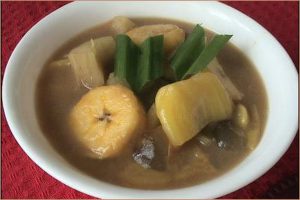
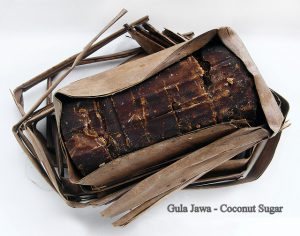
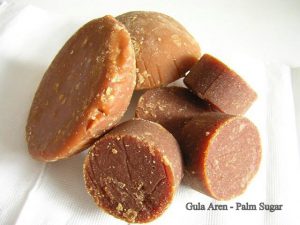
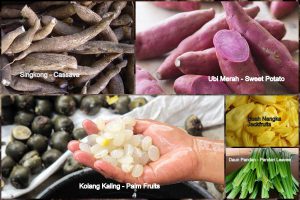
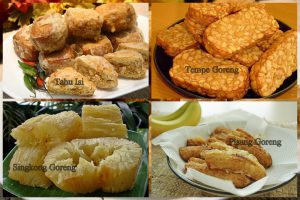

Comments:
Jon Gudnason:
I was in Indonesia last month and had Kolak for the first time. I loved it and was looking for a recipe when I found this. I will be making it this afternoon. Thank you for the post. I will estimate the 1/8 gram amounts of fruit and roots in the recipe as this must be a misprint. You may want to edit that for future users.
asimonoff:
@Jon Gudnason Hi John, thank you for the correction. I have edited the amount of the ingredients; however you can make it just the way you like—which happens to be one of the best aspects of cooking for yourself. Please let me know after you try the recipe. Thank you for stopping by.